Vouchers of Discovery &
How We Named our Grapes
Several oldsters in Madison County had told us about wild Muscadines that they used to eat when they were kids. They said they can remember getting sick as a dog with diarhea for eating too many at one time. All of the published literature said there was no such thing as a cold-hard muscadine that grew in the mountains – said it was too high and too cold. Truth be told, muscadines are a hot weather, high humidity, Southern grape that grows from Texas to Florida to Delaware to Arkansas.
As we taught classes in mountain viticulture, there was always some one in the back of the room who claimed they had muscadines growing on their farm – along a fence row, up their back porch railing, or along side their barn. We always asked to see them because they weren’t supposed to be here in the mountains. When we visited to look at their grapes, they would be Fox grapes, Concord, Niagara or Catawba grapes – not muscadines. After a few dozen visits up the creeks, ridges, and hollers in Madison County, we finally found a patch of them growing near Hot Springs. An old guy named John Watkins had led us to them. He was a self educated mountain man who knew a lot about wild and rare plants in Madison County. Sure enough the wild muscadines were growing there!
We spent the next 3 years trying to propagate them. We made several visits to the major muscadine growers out east in the coastal plains of NC trying to figure out why we were not being able to propagate our wild muscadines. We used the same method they were using but it just didn’t work for us. Finally, a phone call with Lon Rombough, pointed us in the right direction to successfully develop the method of properly propagating the native, cold-hardy Muscadines we found here in the mountains.
We began planting our new rooted cuttings in our vineyard. It was a multi-year task. After a few years we had our first block of muscadine grapevines planted and they were surviving our harsh winters. I applied for a voucher with the NC Arboretum Germplasm Repository and was granted the following voucher where we named our native, cold-hardy muscadine. The Cherokee name for the Southern Appalachian mountains where we live is Katuah, so we named it the Katuah Muscadine in 2014.
Katuah Muscadine Voucher – 2014
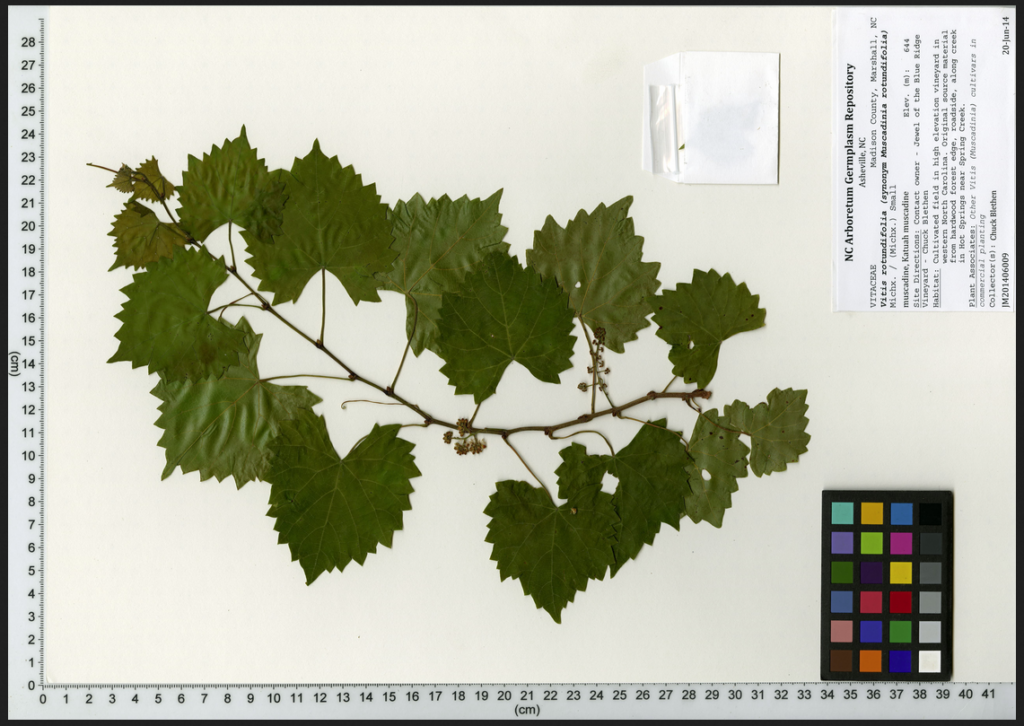
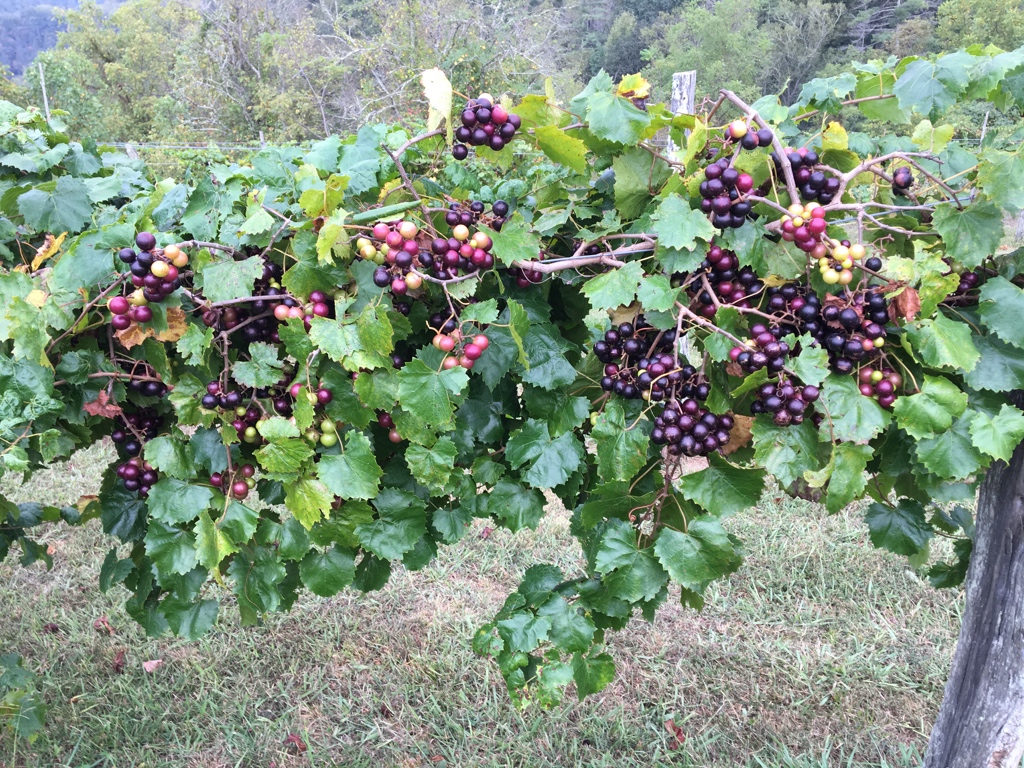
_________________________________________________________________________________
Having been successful in getting a cold-hardy red muscadine growing here, a friend asked “What are you going to do for a white muscadine (Scuppernong).” We looked high and low in the mountains but we only were able to find another dozen or so of small patches of the red muscadine.
We knew that grapes and apples share a common trait – they don’t breed true from seeds. With that fact in mind, we visited a 5 acre organically certified scuppernong vineyard near Tryon. There we picked about 400 pounds of Scuppernong grapes. We made some preserves, pies, a little juice and some wine. We took the seeds and scattered them around the property of our log home. Next Spring we found hundreds of small seedlings popping out of the ground with muscadine leaves – they were Scuppernongs! We transplanted them to our garden and waited. Winter came and in the Spring, only 50 had survived. I guessed those had the cold-hardy gene.
We let them grow for another season and the following Spring all 50 came back. For certain they had the cold hard gene. We planted a dozen in our vineyard and gave the others to several friends and told them to plant them and let me know when they showed the first blooms so I could sex them. It turns out muscadines come in 4 sexes – Male, Female, Self-pollinating (a.k.a. Perfect Flowered), and sterile.
The sterile grapevines will grow for a hundred years and never produce a flower or a grape. Male grapevines will also grow for a hundred years and produce millions of flowers but not one grape. Female grapevines will grow for a hundred years and will produce thousands of flowers and grapes. Females have both a stigma (F) and anthers (M) parts. The Female designation is based upon the structure of the flower, not the ability to produce grapes. The Self-pollinating grapevines also have both a stigma (F) and anthers (M) parts. Structurally the flower appears to be able to pollinate itself easier than the Female. In fact, our observation has been they produce nearly the same yields. And the Females do NOT need Male flowers nearby to produce grapes.
After a few years we began to get phone calls from our friends about the first blooms showing up on my gifted grapevines. Ultimately we found the cold-hardy, Self-pollinating Scuppernong we had been hoping to breed. Among the 12 grapevine plants in our vineyard, 3 were self-pollinating. We have been using those to propagate more grapevines for populating our Scuppernong block – and to propagate them for sale. We also applied for a voucher with the NC Arboretum Germplasm Repository. It was granted in 2019 when we named it the Katuah Scuppernong.
Katuah Scuppernong Voucher – 2019
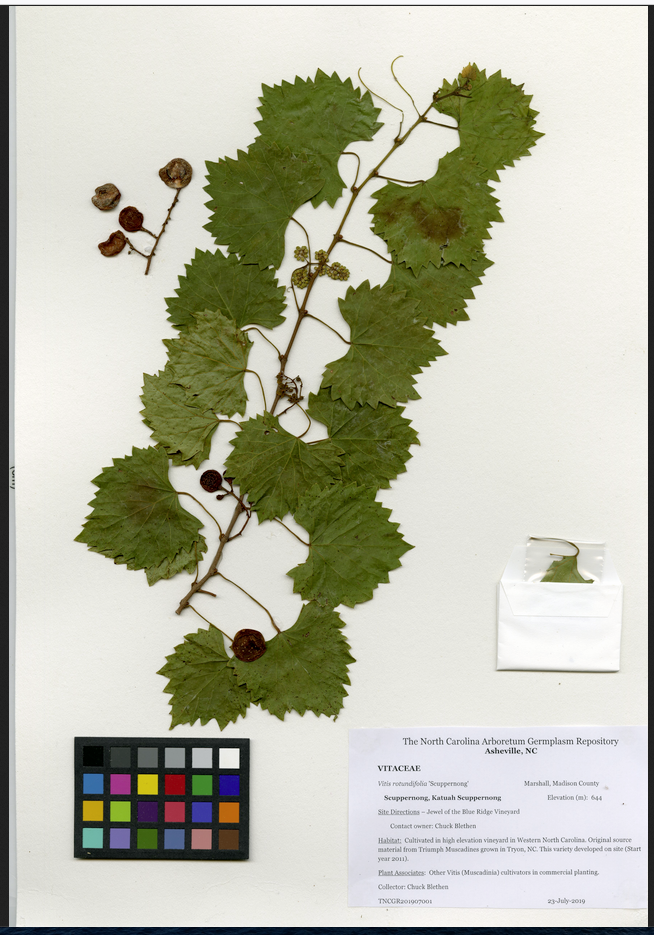
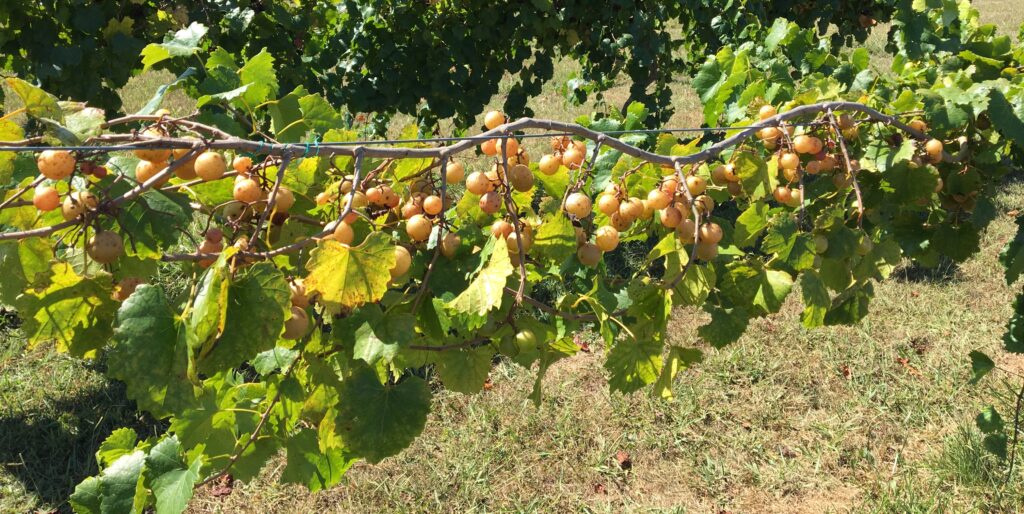
_________________________________________________________________________________
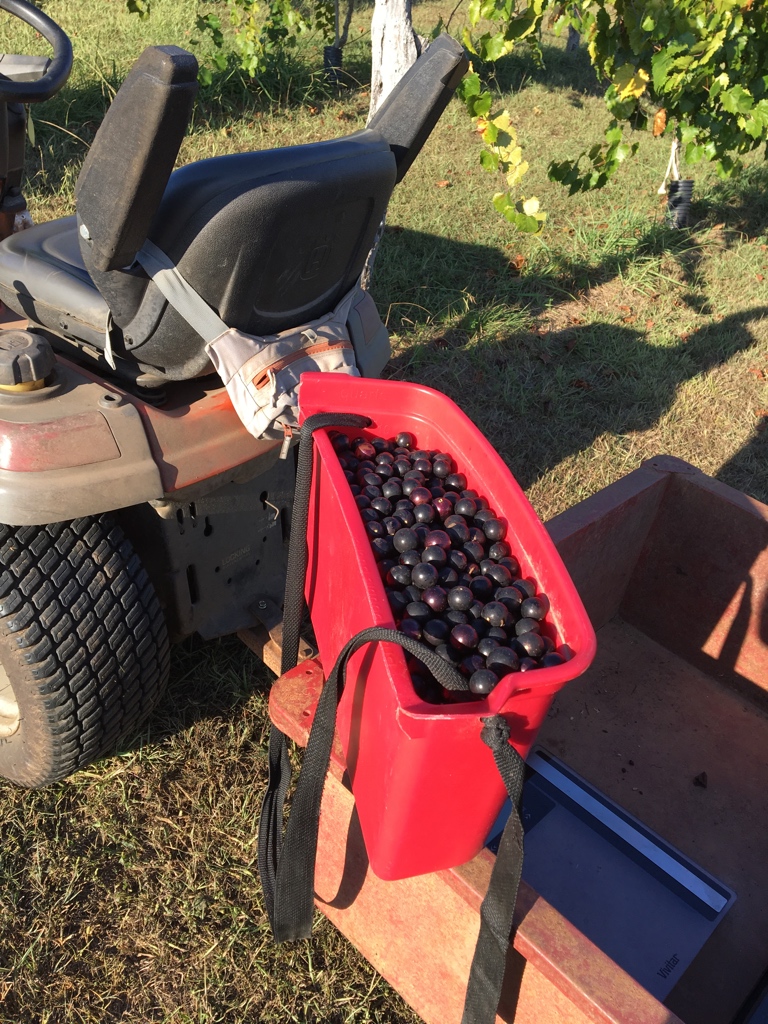
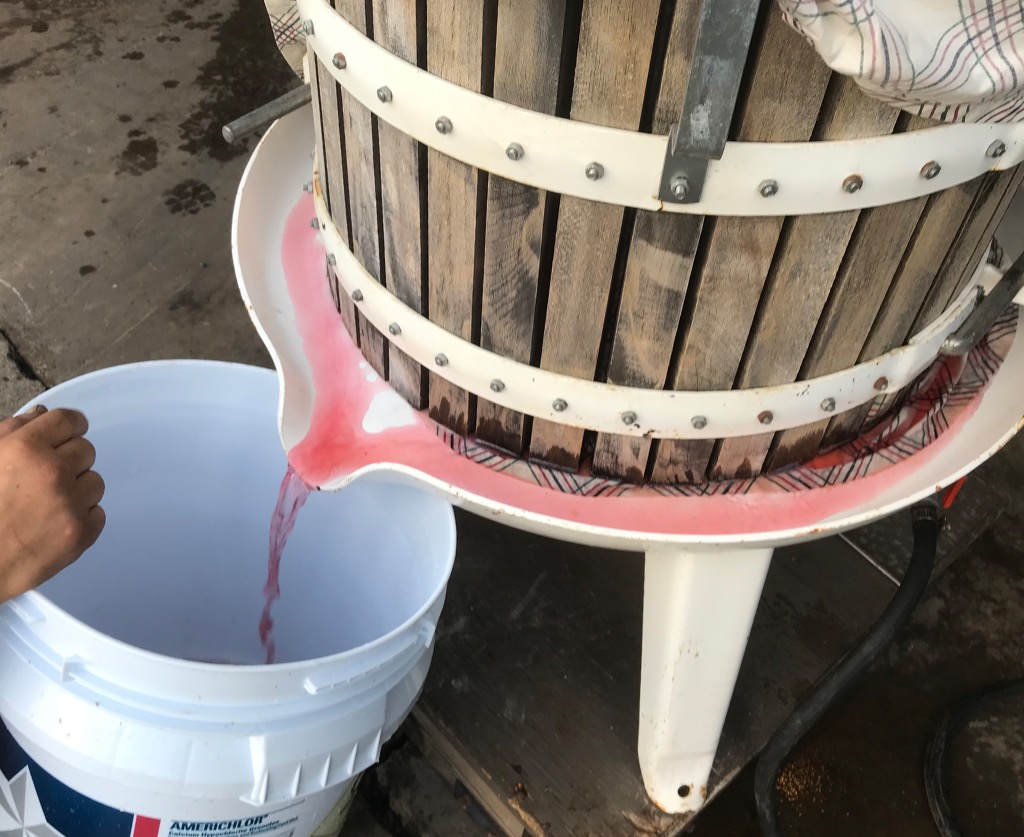
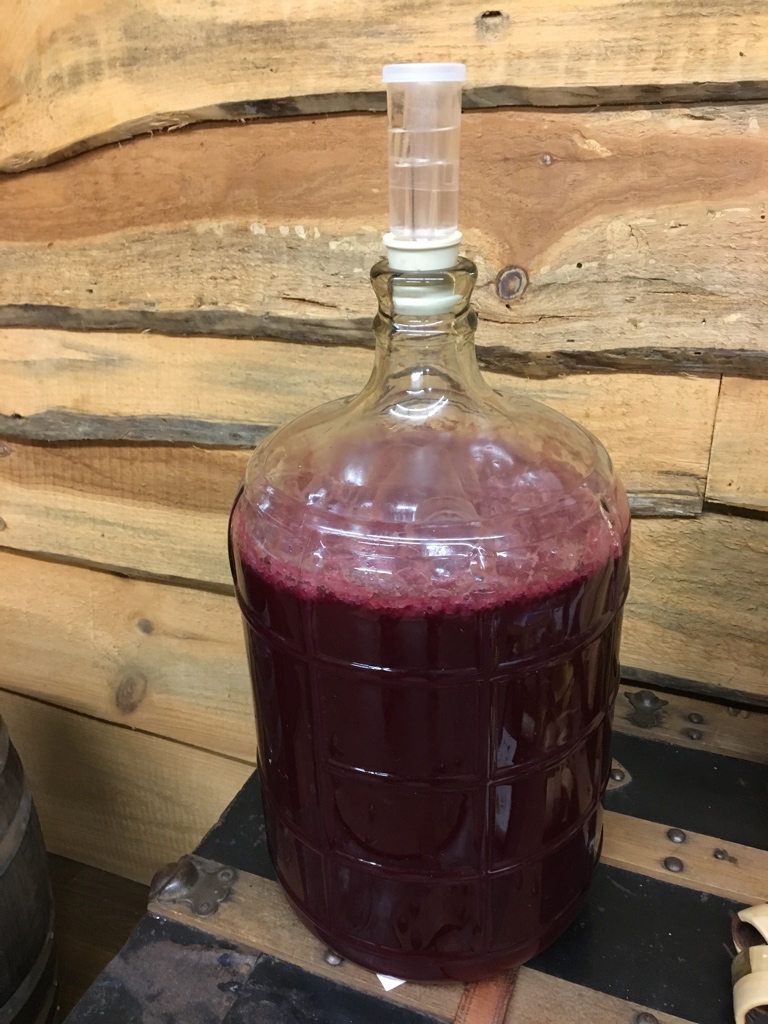
_________________________________________________________________________________